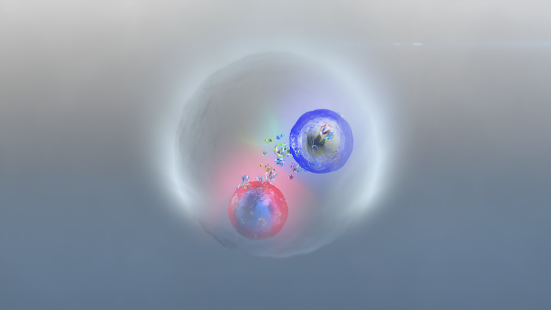Measurements with the ATLAS detector of proton-proton collisions in the LHC accelerator at CERN show that top-quarks sometimes establish a short-lived connection with their antiparticle.
In doing so, the experiment confirms last years results from the competing CMS experiment at CERN.

Toponium
Last year, the CMS experiment already reported that more top-antitop pairs are made in proton collisions than theory anticipates. The suspicion was that a bound state exists for a moment, so-called toponium. That happens when the top and antitop exchange gluons, particles that transmit the strong nuclear force. For the result, CMS had analyzed proton collisions between 2016-18.
At a conference in Marseille this week, the ATLAS experiment reports a similar result in measurements between 2015-18, with even higher statistical certainty that there is a deviation from the case without a bound state.
Quark pairs
If taken as a bound state, it is the third example of a quark-antiquark pair. In 1974, something similar was already demonstrated for the lighter charm-quarks: charmonium. Three years later also for bottom quarks: bottomonium.
Nikhef is an important partner in the ATLAS experiment at CERN, but was not directly involved in these new analyses of toponium.
It cannot be ruled out that the measured excess of top quarks in proton collisions is an indication of the existence of a new, unknown particle. In this case, however, the excess is seen only at the minimum energy required to make a top plus an antitop. This, according to ATLAS, is more likely to indicate a bound state.
Subtle
According to CERN, the new result shows that there is still much to learn about the strong nuclear force and the standard model at high energy. Until recently, the bonding effect seemed too subtle for the LHC detectors. CERN calls the result a breakthrough in that regard as well.
Source: cern.ch, ATLAS